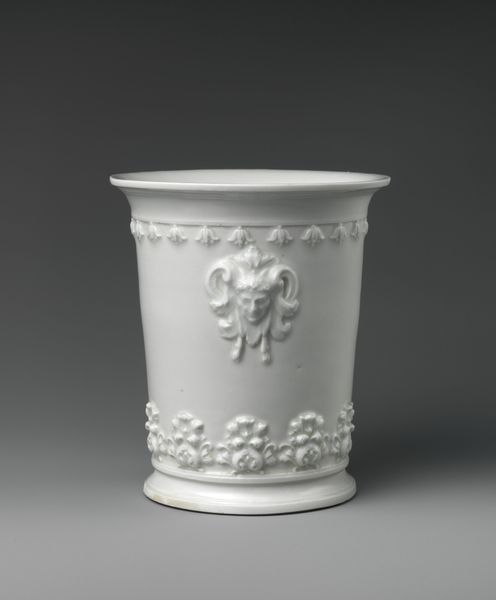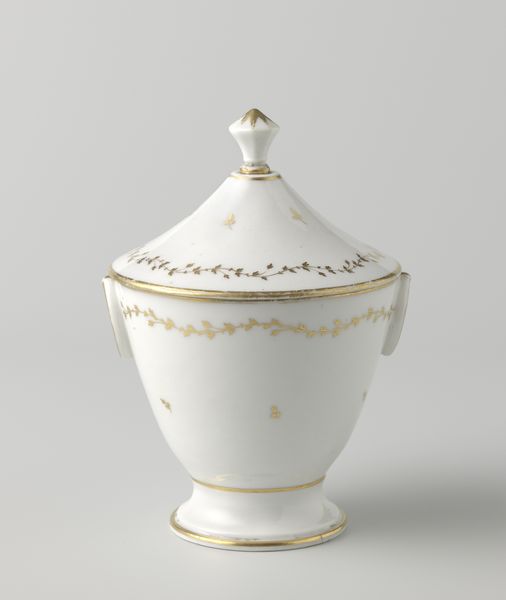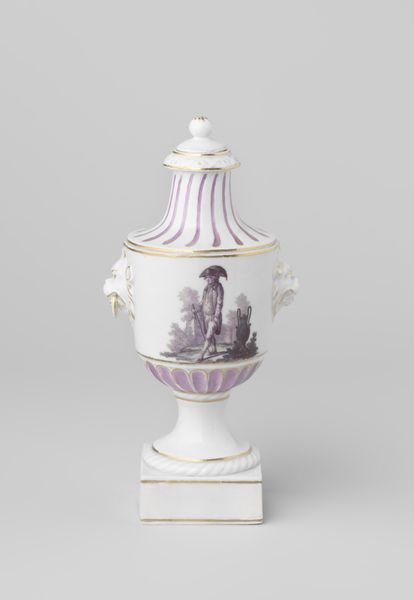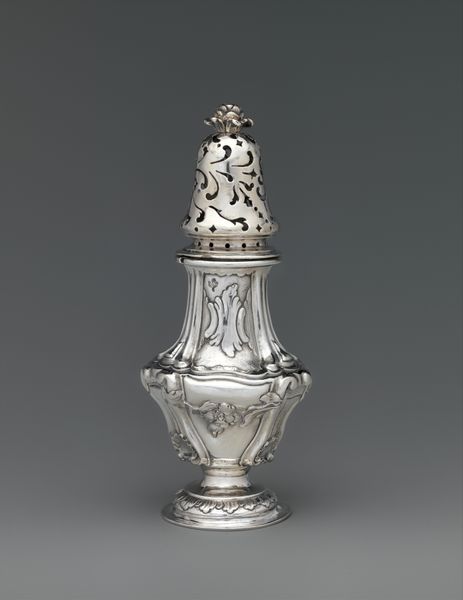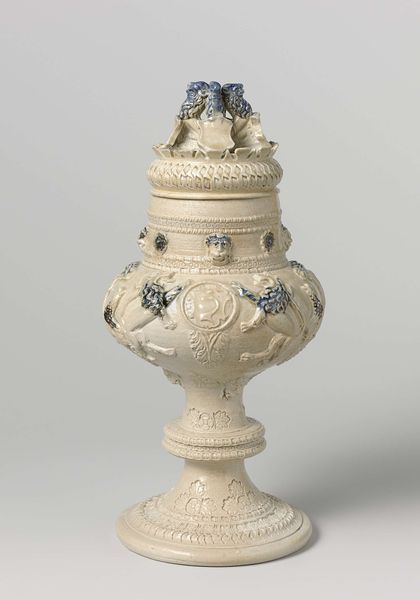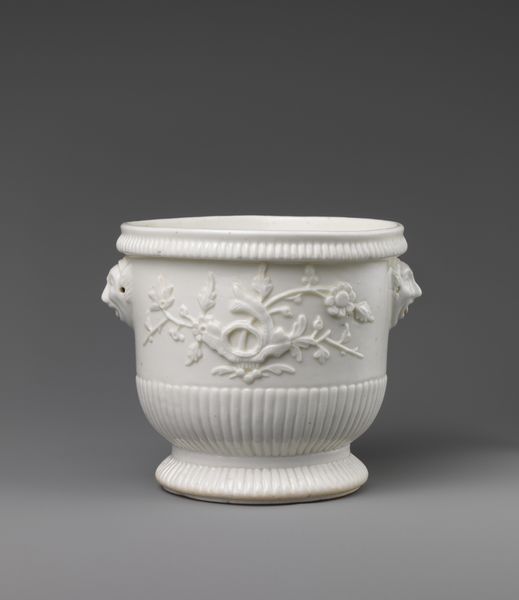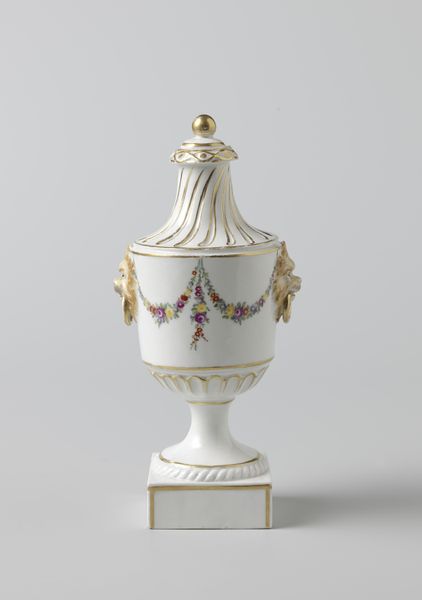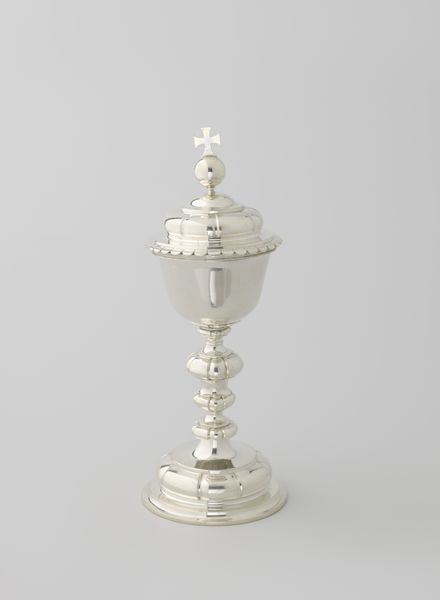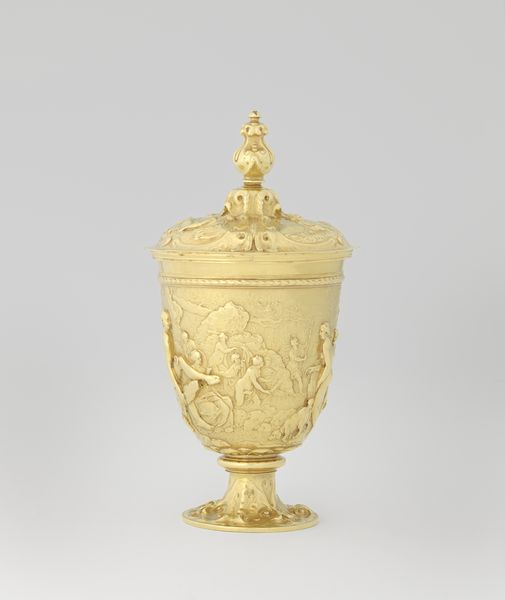
ceramic, earthenware, sculpture
#
neoclacissism
#
ceramic
#
earthenware
#
stoneware
#
sculpture
#
ceramic
#
decorative-art
Dimensions: height 25.3 cm, diameter 13.4 cm, height 27.5 cm
Copyright: Rijks Museum: Open Domain
Crafted by Manufacture de Monsieur le Duc, this white biscuit urn from the Louis XVI era embodies Neoclassical refinement. Note the acanthus leaves, a motif that has its roots in ancient Greek and Roman art, symbolizing enduring life and regeneration. Observe how these stylized leaves, swirling around the urn's body, evoke a sense of movement and vitality. This contrasts with the urn's static form, suggesting a deeper tension between permanence and change, life and death. The urn, traditionally a vessel for ashes, speaks of mortality, but the acanthus whispers of rebirth. The acanthus, from its origins in ancient capitals to Renaissance friezes, mirrors humanity's enduring hope for renewal. This symbol's cyclical journey underscores the power of images to transcend time. The acanthus here isn't merely decorative; it embodies our collective memory. The emotions and subconscious processes attached to it engage us on a profound level. The delicate balance of the urn shape and surface ornamentation makes this a compelling artwork.
Comments
No comments
Be the first to comment and join the conversation on the ultimate creative platform.


